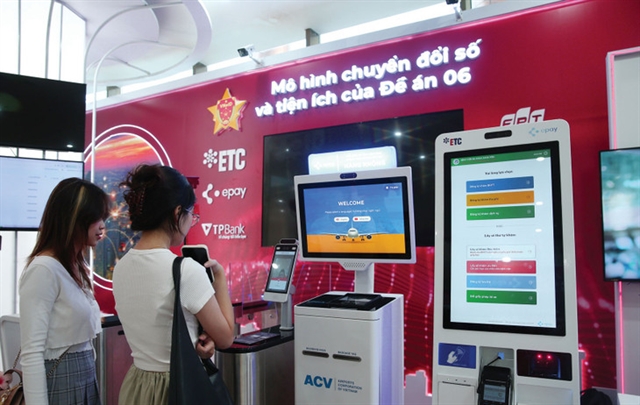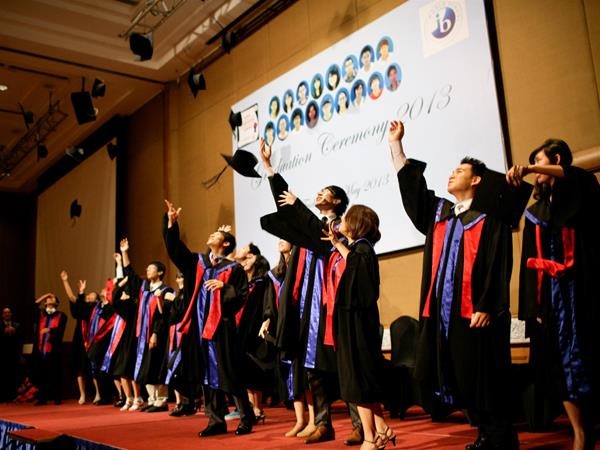 Business Beat
Business Beat

According to the General Statistics Office, foreign investment as of October 20 was US$23.48 billion, equivalent to less than 81 per cent of the figure for the same period last year.

|
Illustrative Image. The Ministry of Planning and Investment’s foreign investment department said as of September 20 FDI in the education sector was up nearly 58 per cent to US$78.9 million.— Photo baodautu.vn
Compiled by Thiên Lý
According to the General Statistics Office, foreign investment as of October 20 was US$23.48 billion, equivalent to less than 81 per cent of the figure for the same period last year.
Most sectors saw big declines due to impacts of the Covid-19 pandemic, but the education sector stood out.
The Ministry of Planning and Investment’s foreign investment department said as of September 20 FDI in the sector was up nearly 58 per cent to US$78.9 million.
Schools offering all levels of education from early childhood to tertiary attracted the most FDI of around $5.28 million, or nearly 35 per cent of all new FDI coming into the sector.
The British Virgin Islands, South Korea, the US, and Singapore were the biggest investors in the sector, with the British Virgin Islands ranking top with $23.68 million.
Diamond Crest Global Limited of the British Virgin Islands was the biggest investor, putting in $17.6 million in Hà Nội-based international education establishment, Thiên Hương.
What accounts for this interest in the Vietnamese education sector among foreign investors?
According to David Ireland of Navis Capital, many investment funds are interested in this sector because Viêt Nam has in recent years achieved the highest GDP growth rate in Southeast Asia and has a young population and thus high spending on education.
Market room
A plan to develop the country’s universities and junior colleges in 2006-20 approved by the Prime Minister targets having 30-40 per cent of students at private higher education establishments by 2020. But the current rate is only 14 per cent.
As of last year there were only five foreign-invested universities in the country in addition to 68 private universities and 170 state-owned ones. Non-state education at all levels makes up just 7 per cent, and accounts for 6 per cent of the total number of students.
However, public schools and universities have failed to meet the growing demand.
The number of students who want to study aboard continues to increase year after year as many hope to get international certificates to get jobs at international companies.
The demand for international standard education from the expatriate community is steadily increasing.
According to the Ministry of Labour, Invalid and Social Affairs, since 2013 the number of foreigners licensed to work in the country has been growing at 4.2 per cent annually.
This means the education sector is in great need of all-level schools with competitive tuition fees that can offer quality education and, most importantly, grant international certificates that are accepted by major companies, especially foreign ones.
So, Việt Nam’s education market remains a promising one for foreign investors.
Policy and development
The Higher Education Law was amended to include many new provisions like giving greater autonomy to universities, including financial.
The move has created more opportunities for non-State players, including foreign, to be involved in the education sector.
Analysts said foreign investment in the education sector remains modest compared to the market’s potential, accounting for less than 2 per cent of total FDI.
The main barriers to foreign investors’ entry into the education sector are minimum requirements in terms of capital and personnel and complex procedures.
They need an investment amount of at least VNĐ1 trillion (over $44 million) to set up a tertiary education institution, while a campus of a foreign-invested university is required to have minimum capital of VNĐ250 billion.
Experts believe however that these barriers can no longer prevent foreign investors from entering the education sector since recent policy changes have created more favourable conditions for them, making them feel more secure about investing in the sector.
They point to Decree No 86/2018/NĐ-CP on foreign cooperation and investment in education, for instance.
It replaced Decree 73 and applies to foreign co-operation and investment activities in education from early childhood and primary, secondary, and tertiary levels. It increases the rate of students at foreign-invested education establishments from the earlier maximum of 10 per cent to 50 per cent.
Thanks to this, international schools have seen and will continue to see a sharp increase in the number of applications.
Joshua James of EuroCham told Vietnam Investment Review newspaper that foreign investment in Việt Nam’s education sector would continue to rise from now on since the country’s profile has risen significantly thanks to its success in combating Covid-19.
The country’s growing young population and its great efforts to achieve high economic growth also make its education market attractive, he said.
More efforts to push exports to EU
The Ministry of Industry and Trade’s export-import department has said it will allow shipments bound for the EU before August 1, when the EU-Vietnam Free Trade Agreement (EVFTA) took effect, to get a certificate of origin (C/O) to enjoy preferential tariffs set out in it.
Consignments that were transported to or stocked at warehouses, bonded warehouses and tax-free zones within 24 months before August 1 can ask related agencies to issue the C/O under the EUR.1 form to be able to enjoy the tax breaks under the EVFTA.
Those not within the 24-month time frame but stuck in bonded warehouses are also eligible.
But the ministry and EU partners will negotiate on a case-by-case basis and take a decision on each.
In the two months since the EVFTA took effect, the trade ministry has granted 24,000 EUR.1 certificates of origin to Vietnamese goods worth nearly US$1 billion.
The EVFTA is an ambitious agreement that eliminates almost 99 per cent of custom duties between Việt Nam and the EU, with 71 per cent of tariffs on Vietnamese exports scrapped after the agreement took effect and the rest over a period of seven years.
Sixty five per cent of duties on EU exports to Việt Nam will be eliminated immediately and the remaining over the next 10 years. VNS